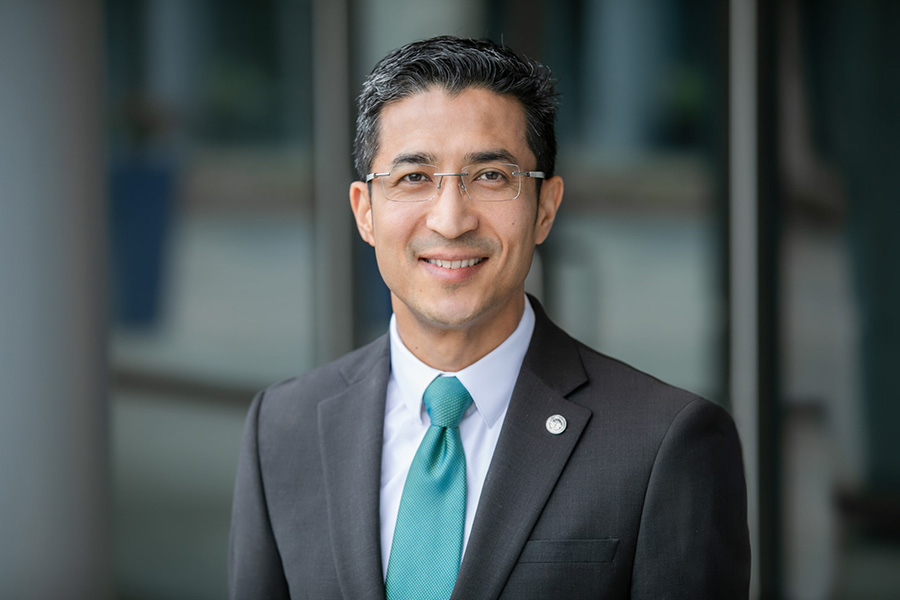Across the country, health system leaders in the C-Suite are reacting to the COVID-19 pandemic in multiple ways with varying mindsets on what’s likely to be the most impactful event of their careers.
There is the obvious mindset: How do we care for our patients? How do we manage surges of COVID-positive patients? How do we supply caregivers with the right resources? What are our safety protocols? How can we better support doctors and nurses?
And then there are the economic ramifications of the COVID-19 pandemic. How can a health care organization maintain a strong economic outlook when so few patients are willing to go to the hospital? What’s their strategy for caring for newly uninsured patients or those facing financial hardships that have been caused by the pandemic? There is also the issue around health disparities, racial inequality and societal issues that health care CEOs and leaders must confront, to which COVID-19 has furthered exposed.
For leaders at Atrium Health in the Carolinas and Georgia, COVID-19 has certainly forced them to confront all of those challenges. But it’s also an opportunity to transform how the health system can serve its patients, says Rasu Shrestha, MD, Atrium’s Chief Strategy Officer. In fact, the health system is using this crisis to recalibrate and to think about what the system will look like post pandemic. The system is calling this shift the “next normal.”
“It’s not just the new norm, it’s the next norm. The ‘new norm’ has connotations of apprehension, uncertainty and the unknown. The ‘next norm’ is what we’re purposefully creating and strategically going after,” says Shrestha.
Shrestha spoke with Health Evolution about what long-term projects are underway at Atrium in response to the COVID pandemic and to share some of the lessons they’ve learned in the last few months. Below are excerpts from this conversation.
Health Evolution: How has COVID-19 changed the strategic outlook at Atrium Health?
Rasu Shrestha, MD: As we’re looking at [post-pandemic success] and what winning looks like in the next normal, we’re taking on a bi-modal methodology. Mode one is about pandemic readiness and management, organic growth, workforce and culture, and financial liquidity. That’s critically important. You have to make sure you’re able to address those elements and essentially be in a position of strength to come out of this in a financially prudent way.
But mode two is about reimagining and reshaping. That’s about focusing in on specific elements of digital acceleration, newer business models, and consumer-centric approaches that we need to be taking. And also, it’s about upping our efforts around specific strategies to eliminate health disparities. Social impact is a key component of our strategic framework
HE: What are some big projects you’re working on in response to the pandemic?
RS: If we look at the industry as a whole, we’re functioning in a VUCA environment. An environment that’s ripe with volatility, uncertainty, complexity and ambiguity. There are lots of things we’re contemplating as a result of that. The rate of change. The uncertainty about the present. There are multiple decision factors that go into what may constitute the path forward. There is a lack of clarity on so many different angles, including the policy side.
But if you think about telemedicine, virtual health has been a strength of ours and we’re proud of that at Atrium Health. We’re doing a lot of things in terms of virtual behavioral health and with virtual visits. Through the pandemic, our numbers are staggering—7,500-times more than what we were doing pre-pandemic. We have an AI-enabled chatbot in place. Compared to other health systems using AI-enabled chatbots, we’re at the top in terms of how many patients and consumers are using it. As a result, we’re able to effectively triage and efficiently streamline the flow of our patients throughout our EDs into our ICUs.
We were able to nimbly turn the dial up on creative digital and care capabilities, including our virtual hospital, which has allowed for us to care for our patients where they need to be cared for best. The first two “floors” of that virtual hospital are the patient’s home. We are able to risk stratify patients who don’t need to be in ICU beds and exposed to other elements. We are monitoring them remotely, using digital capabilities, and able to leverage the human element with frontline staff and nurses actually driving up to their homes for a level of care in the safety of their homes. That’s a model we see being sustained moving forward. If we look at commercial, consumer and community elements, and the evolving nature of primary care and how that’s transformed, all of those are coming together to form what we’re calling our connected care everywhere strategy. I think these are exciting times that allow us to reimagine what the future of health care could and should look like.
HE: What have been some of the biggest lessons learned from these past few months?
RS: The first lesson is that the walls between public health and traditional health care systems have come down. Public health has traditionally been seen as the domain or territory of municipalities or public health organizations, both in the state and federally. “The CDC will take care of that and health systems will take care of the patients in the hospitals.” That’s not the case anymore. Now it must be seen as one large continuum.
The other big realization is just how flat the world true is. We’re truly one global community. By that I mean a virus that came out of Wuhan, China is now affecting us globally. We’re all one global community. That’s also critically important as we come up with a vaccine and develop best practices for the next wave or the next pandemic that might strike us.
Another lesson is recognizing the pace with which decisions are made. The agility with which we make these decisions is important. I’d say there is also a need for more rigor and discipline in making those decisions. If everything is important then nothing is important. At the same time, it’s important for us to be a lot more nimble and agile in how decisions are made. We saw that in last few months, where decisions were being made at record speed. Things that would have taken three or four years were being done in a matter of weeks or days. It will be interesting to see how we can sustain that trajectory and discipline.
The last thing is the importance of public, private and policy stakeholders coming together. It’s more critical than ever to ensure that we push for meaningful and sustainable change in our communities – and this can only be done hand in glove working with creative policy changes, and partnerships across private and public sectors.
HE: From a strategic perspective, how will Atrium navigate the two worlds going forward – the world of COVID-19 and the rest of the health care system? How do you manage that balancing act?
RS: It is definitely a balancing act. There will be winners and losers. It’s important to make sure we’re on the right side of history. It’s going to be critical for us to get that balance right. We’re a mission driven organization to “improve health, elevate hope, and advance healing for all.” That mission drives the elements of transformation and the strategies we’re pulling together. It will be important to address the disparities and gaps in care we’re seeing out there. But also, to be strategic and intelligent about how we go about doing that, how we leverage technology and how we formulate meaninful partnerships where we can co-create the right solutions for the future we’re building for.
As a health system, we’ll continue to see a lot of things that will transpire in the next couple of months. Additional investments and capabilities around telehealth. Remote patient management is going to continue to be an area we invest in. Virtual behavioral health is a sweet spot for us and you’ll see more coming out of that in the coming months. Generally, we need to drive more efficiency in the health care system through technology and AI driven capabilities. We need to allow for these human interactions to play itself out front and center in the care we’re providing to our patients and our consumers.










